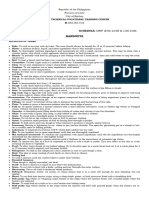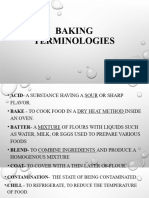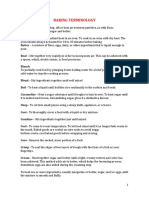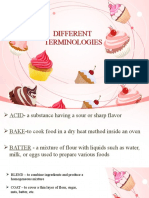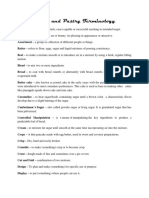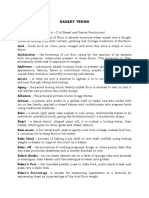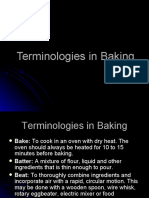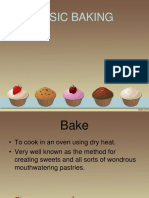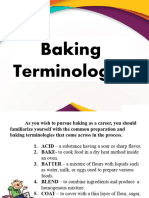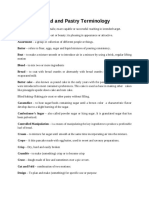0% found this document useful (0 votes)
47 views60 pagesBaking Basic Terminologies
The document discusses various types of flour and their properties that are important for baking. It describes wheat flour as the primary ingredient and explains the different types of wheat flour including bread flour, all-purpose flour, and cake flour. It also mentions other non-wheat flours and starches used in baking.
Uploaded by
Lucia RodriguezCopyright
© © All Rights Reserved
We take content rights seriously. If you suspect this is your content, claim it here.
Available Formats
Download as PDF, TXT or read online on Scribd
0% found this document useful (0 votes)
47 views60 pagesBaking Basic Terminologies
The document discusses various types of flour and their properties that are important for baking. It describes wheat flour as the primary ingredient and explains the different types of wheat flour including bread flour, all-purpose flour, and cake flour. It also mentions other non-wheat flours and starches used in baking.
Uploaded by
Lucia RodriguezCopyright
© © All Rights Reserved
We take content rights seriously. If you suspect this is your content, claim it here.
Available Formats
Download as PDF, TXT or read online on Scribd
/ 60











